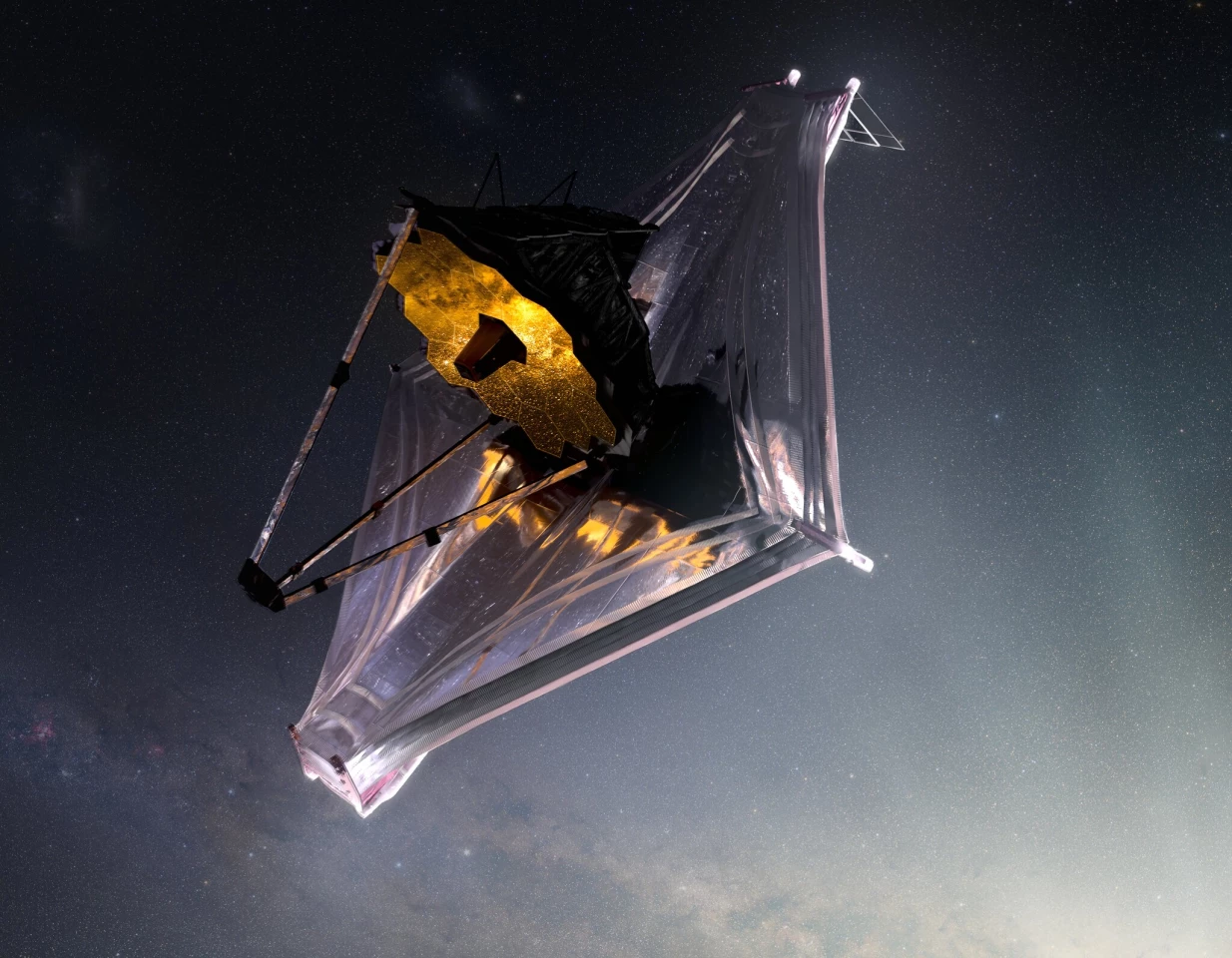NASA's US$10 billion James Webb Space Telescope has completed its final deployment without a mishap. Starting today at 8:53 am EST, the starboard wing of the 21-ft (640 cm) gold-plated primary mirror began to swing, locking into position at 1:17 pm.
Today's unfolding of the last part of the giant space telescope marks the end of a nail-biting series of events for the Webb since its long-delayed launch on December 25, 2021. Because the telescope and its supporting spacecraft are so large, the whole thing had to be folded up like an elaborate and very expensive piece of origami to allow it to fit into the nose cone of the Ariane 5 rocket that hurled it into space.
While this arrangement did allow the Webb to be launched, it presented NASA and its partners at ESA and the Canadian Space Agency with a problem. Normally, once a spacecraft is in orbit, that's pretty much job done except for unfolding some solar arrays and an antenna, but with the Webb, things were much more complicated with many more chances of something going wrong.
The first deployment after launch was the simplest and even routine as the solar array to power the spacecraft unfolded, followed by the antenna array to maintain radio contact with Earth. Then the forward and aft pallets supporting the sun shield that protects the telescope against the light and heat of the Sun, Earth, and Moon unfolded. After this, the telescope extended slightly from the spacecraft bus on a boom to further insulate it and a flap opened that acts like a sail to use the solar winds to stabilize the telescope's attitude.
Then came the trickiest part. The port and starboard booms used to unfurl the sun shield were extended and then the shield itself was deployed. The shield consists of five extremely thin layers of a coated polymer called Kapton, each covering an area the size of a tennis court. With a small space between each layer to allow trapped heat to radiate away, each layer is successively cooler, allowing one side of the shield to keep a temperature of -370 °F (-223 °C) on the telescope side and 230 °F (110 °C) on the sunward side.
Because the shield is so large, yet so delicate, it had to be furled in an intricate pattern. When it came time to deploy it, first on the port side and then the starboard, 107 actuators had to work perfectly to make sure it opened properly without tearing. This was followed by carefully tensioning each layer to put them into the correct positions.

Once this was completed, mission control ordered the Webb to deploy the radiator used to keep the instruments supercooled, the secondary mirror that directs the light collected by the primary mirror to the instruments, and then the wings of the primary mirror. The port wing swung into place on January 7 and the starboard wing today.
Though the telescope is now fully deployed, there's still a lot of work to be done. The 18 hexagonal segments of the primary mirror are controlled by a set of 126 motors and the segments have to be fully tested and calibrated over the course of the coming months. The craft's systems must also be given a thorough going over before it's commissioned and can begin its science mission to study the early history of the universe.
Meanwhile the spacecraft will carry out a course correction burn that will send it into orbit around the Lagrange 2 (L2) point about one million miles (1.5 million km) from Earth, where the gravitational fields of the Sun and the Earth cancel one another out, allowing the telescope to maintain a stable position in space.
"Today, NASA achieved another engineering milestone decades in the making," says NASA Administrator Bill Nelson. "While the journey is not complete, I join the Webb team in breathing a little easier and imagining the future breakthroughs bound to inspire the world. The James Webb Space Telescope is an unprecedented mission that is on the precipice of seeing the light from the first galaxies and discovering the mysteries of our universe. Each feat already achieved and future accomplishment is a testament to the thousands of innovators who poured their life’s passion into this mission."
The video below shows the entire deployment sequence.
Source: NASA







